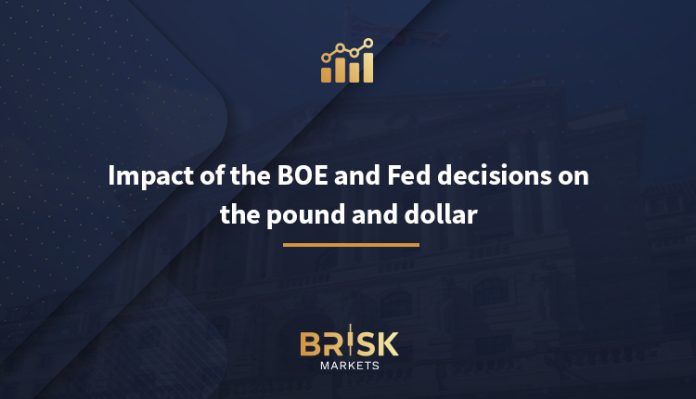
The pound sterling fell on Wednesday before the Bank of England announced its decision on interest rates, raising investor expectations and prompting careful analysis of upcoming economic trends. Traders are looking at possible signals from the central bank about its fiscal policy direction, which has mixed effects on the value of the pound against the dollar and the euro.
In the context of these developments, the British pound recorded a decline of 0.13% during the day against the US dollar, recording $1.2470. It also fell against the euro, which rose by 0.1% to trade at 0.68 pence. Despite these declines, the pound remains the second best performing major currency after the Chinese yuan, which witnessed a slight decline of 1.5% in the global market.
Future forecasts and technical analyzes indicate that the Bank of England may move towards lowering interest rates in the coming months, with the possibility of offering two quarter-point cuts by the end of this year, which reflects an improvement in economic performance and an expected recovery in various sectors.
After its latest meeting, the Bank of England’s expectations appear to have changed significantly, as the market was anticipating further cuts based on previous economic data.
A strategist said, “The Bank of England’s decision to cut interest rates, whether in June or August, may seem like just an academic issue, but the reality is that it has important effects.” In the event of a cut in June, the Bank of England will have five new opportunities to act before the end of the year, which gives it flexibility and the opportunity to act according to economic and financial variables.
The impact of the Bank of England’s decisions on the pound sterling
“The value of the British pound is floundering ahead of the Bank of England’s interest rate decision, as the British currency faces challenges this morning with no new releases of macroeconomic data in the United Kingdom. As the second half of the week approaches, investors expect volatility in sterling trading with the release of some data.” Important market.
The Bank of England is expected to announce its latest decision on the interest rate later today, amid expectations of holding the rate for the sixth time in a row, but the markets are eagerly awaiting future guidance from the central bank. Investors and analysts will closely monitor any signs indicating the timing of the start of the interest rate hike cycle.
The impact of Fed members’ statements on the fluctuations of the US dollar
The US dollar (USD) recovered from its previous decline in light of the calm data issued, as it’s trading this morning witnessed fluctuation without a clear direction. The comments of Federal Reserve members in recent days appear to constitute a primary driver of the dollar’s movement in the coming period, especially with the continued absence of high-impact US economic data.
The US dollar is expected to remain vulnerable to market fluctuations due to the impact of economic policymakers’ speeches in the coming days, amid continuing discussions about the possibility of lowering interest rates. These moves come in light of expectations for the release of initial US unemployment claims data on Thursday, May 9, where its impact on the performance of the US dollar is expected to be monitored.
Impact of interest policies on the pound sterling, dollar and the economic outlook
The Bank of England and the European Central Bank appear to have enormous capacity to cut interest rates, but this action cannot be sustainable without synchronized action by the US Federal Reserve. The difficulty in the Bank of England’s move in this context is evident, as they must take into account the gap caused by the difference in interest rates between the United Kingdom and the United States.
The European Central Bank and the Bank of England are expected to keep current interest rates unchanged, in an attempt to limit inflation, especially as unemployment levels remain exceptionally low. “However, this move may produce adverse effects such as increasing the cost of imports, but it will certainly enhance the competitiveness of the regions and support exports, making it an attractive strategy for the economic zone.”
In this context, Christina Hooper, chief global market strategist at Invesco, indicated that there is a “possibility” of an interest rate cut by the Bank of England in the coming days, especially after the cautious behavior taken by the Federal Reserve last week.
“If there is no rate cut this week, the Bank of England is highly expected to signal the start of rate cuts this summer, perhaps in June, just as the ECB is sending similar signals,” Hooper added.
Analysts say the “linkage” between the Fed and the Bank of England’s policy may be overdone, giving the UK bank greater flexibility to make independent decisions on the US interest rate if necessary.
Not only is inflation estimated to be much lower, but there is also increased confidence in future economic expansion, making the British pound one of the most resilient major currencies in the face of growing dollar challenges.














